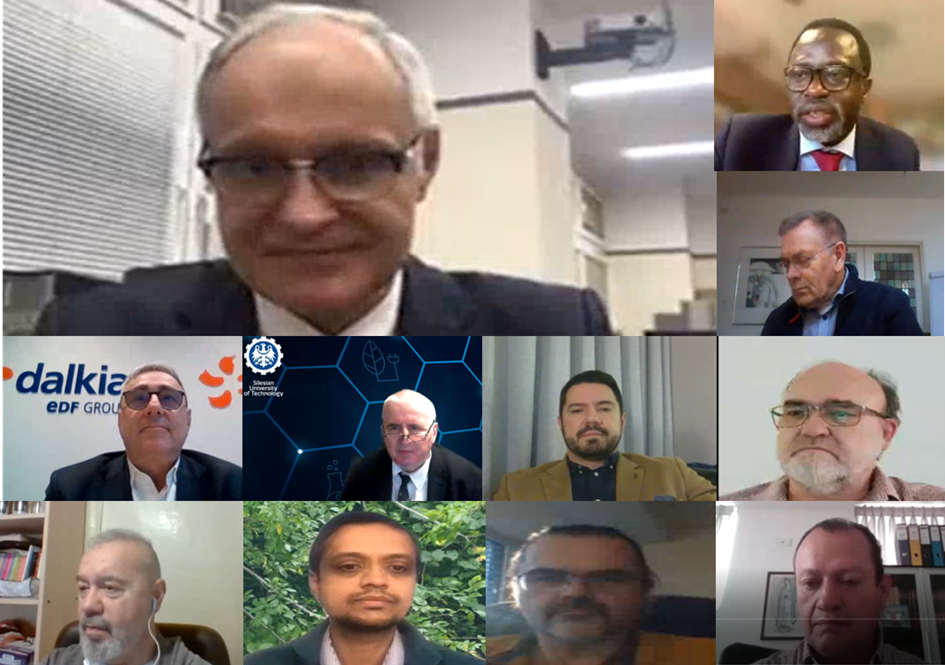Start - Drugie spotkanie Międzynarodowego Zespołu Konsultacyjnego na Politechnice Śląskiej
On November 21, 2022, the International Consultative Board held its second session.
The International Consultative Board features 32 members (as of November 21) - 4 from North America, 5 from South and Central America, 12 from Europe, 5 from Africa and 4 from Asia. 21 members represent industry and 11 come from academia.
The session was held online with the use of the Microsoft Teams platform.
The topic of this meeting concerned the cooperation between universities and the industry. The meeting was opened by Prof. Paweł Sowa, PhD, DSc, the Rector’s Plenipotentiary for the International Consultative Board. He welcomed the Vice Rector for Science and Development Professor Marek Pawełczyk, PhD, DSc, present at the meeting and then he invited the new members of the board to present information on themselves and others to provide their comments on the topic and information on their experience with the cases of this type of cooperation.

Professor Tshilidzi Marwala, a re-appointed member of the board, mentioned in the meeting that his five-year term as Rector of the University of Johannesburg (South Africa) is coming to an end and that he will be leaving the University of Johannesburg to join the United Nations University as Rector and UN Under-Secretary-General on 1 March 2023. He will be stationed in Tokyo. The United Nations University has many campuses in Europe. He started the discussion talking about the importance of international education.
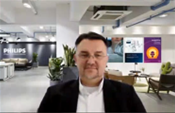
Miroslav Saban from Croatia, Government and Public Affairs Leader for Philips Central and Eastern Europe, spoke of the partnership between his company (Philips) and academia, which is targeting meaningful innovation. He has not only referred to the topic of the meeting, but also told some general information about his company. He first mentioned the challenges in healthcare organization that his company targets, concerning global resource constraints, aging populations and the rise of chronic illnesses, increasing consumer engagement and, finally, on challenges in digitalization. The role of Philips in the innovation domain has also been mentioned, where he mentioned over 130 years of innovative achievements of Phillips and over 100 years of their activity in Poland. He also presented their impressive results from recent years in the R&D department. He gave examples of their broad partnership with academia and their various approaches to innovation. Next, he spoke of their High Tech Campus located in Eindhoven in The Netherlands, which started as a closed scientific unit and has since grown in an amazing rate, currently housing 235 high-tech companies with over 12,000 innovators, researchers and engineers. Regarding their partnership with academia – he gave an example of a smooth collaboration across different institutes: e/MTIC, which is a large-scale research collaboration between various healthcare units, Philips and the Eindhoven University of Technology (TU/e). As another example of an innovation partnership, he spoke of their agreement with Karolinska University Hospital, which comprises of R&D, an innovation program and education, and the procurement, installation, maintenance, upgrading and replacement of most of the medical imaging equipment. The key achievements of this partnership have also been displayed. In his presentation, he also mentioned the role of Philips as a strategic partner for the European HealthTech Innovation Center. He mentioned the joint implementation of the project entitled „Silesian Center for Engineering Support of Medicine and Sport”. There was also a mention of the selection of Philips as industrial partner for the Silesian University of Technology. He also presented their ongoing cooperation plan for the near future. Finally, he presented some concluding remarks and additional resources.

Dr Mana Hassan, from University Ferhat Abbas of Setif in Algeria, where he has been working for 20 years until today, was the next speaker. He gave a brief presentation on his background, where he acquired his PhD specializing in measurements and electromagnetic compatibility. He spoke of his membership in a research lab of quality of electrical power and EMC. He also spoke of the problems of partnerships between Algerian industry and universities and little interest of a majority of the industry in his country in research universities. Also, he mentioned, that there are problems in the financing of projects in universities. There was also a mention of how the Algerian Researchers are often free to choose their research topics but also this rather results in cooperation with the foreign laboratories rather than the industry in Algeria. There is also a problem when it comes to the practice of a second activity beside teaching when it comes to university teachers, as it has some problems when it comes to the legal part. He mentioned that when it comes to universities, the most funding is received from the government. He mentioned, however, a few cases of organizations of conferences and projects that have been made at the level of the universities of at the service the oil companies as well as in the field of renewable energies, where many agreements have been signed between some universities and the companies, with the financing of the Algerian state. Also several investments in the field of agriculture and chemical fields were mentioned.

Christian Sturm, Regional Manager CEU of the Austrian Company OMICRON, recalled some information on his company. He mentioned protection and power utility communication testing solutions in the medium and high voltage grid. Another domain in which the company is heavily involved is primary testing and diagnosis of e.g., power transformers, circuit breakers, instrument transformers and generators. The company is also scientifically involved in cyber security. He presented some examples on their already very good cooperation with the Silesian University of Technology, mentioning the company’s visits in 2018 and 2019 involving protection tests and partial discharge measurements with the use of professional OMICRON equipment.
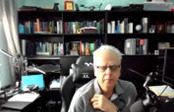
Jean Mahseredjian who is a Professor at Polytechnique Montreal, also the CEO of PGSTech, a company that is developing and commercializing the well-known software EMTP. He spoke of the many challenges including the urgent needs for training highly qualified personnel and the alignment of studies with industry needs. He also spoke of the challenges for universities when it comes to hiring graduate students. Some of the research project funding opportunities in Canada have been displayed, including those funded by the Natural Sciences and Engineering Research Council of Canada and by the industry. NSERC Alliance Grants, MITACS internship grants, Innovée grants have also been mentioned. Next he spoke of Research and Development Contracts and the details on research costs. The Professor also mentioned a well-established unit since 2001, called IGEE: Institute of electrical engineering, which is a special institute fully funded by several industries, where the teaching is organized according to industry needs, there are regular meetings with industry members and several industry members even participate directly in teaching.
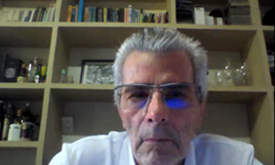
Edson Guedes da Costa, PhD, from Brazil, who works in the Department of Electrical Engineering of the Federal University of Campina Grande (UFCG), presented the mechanisms and agencies for public and non-public funding in Brazil. He explained that the main research funding agencies at Brazilian universities are the Ministry of Science, Technology and Innovations, the Ministry of Education and BNDES – the National Bank for Economic and Social Development. He also laid out the details on the units in the mentioned funding agencies. Here, above all, he provided detailed information on EMBRAPII, a private non-profit organization, whose projects aim at research, development and innovation. He explained how their funding model works and how they are involved with his department. Their EMBRAPII Projects included studies of e.g., analytics and big data, embedded, mobile apps, instrumentation and control, industrial automation and home automation.

Jeff Blake from the USA, representing Dontech Innovating Optical Solutions, briefly presented his background in business developments, sales marketing, mainly in the technology sectors that include equipment for optical measurement, optics for cameras and display systems, vacuum thin film depositions. He briefly presented his past cooperation with companies such as Ezassi, which deals with SaaS software for Medical & Pharma Innovation; Datacolor (a Swiss Public Company), manufacturing spectrophotometers for measuring color that are used in color formulation and quality control for building different types of plastics and textiles; Dunmore, a company manufacturing large format coded films for packaging, reflective insulation, aerospace and other types of industrial applications. He also gave a brief summary of his achievements in the mentioned companies, which resulted in their growth. He also mentioned his current job for Dontech, which is a manufacturer of different products for medical devices, aerospace and industrial applications as well as for optics, camera systems, new technologies for self-driving cars and surveillance optics. Referring to Dontech, he gave some examples of leading technologies and business development innovation solutions that have been introduced by the company as well as the specifics for their market segmentation and business expansions for aerospace, precision optics and displays, imaging and electronics.
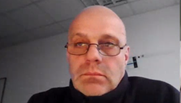
Gert Henschel, who is the Technical Solutions Director at ALSTOM Grid GmbH, presented some examples of a cooperation with the Technical University in Dresden, Germany. He mentioned the close cooperation with the Institute of Electrical Power Systems and High Voltage Engineering. He explained that because their company is an engineering company, not one with an R&D department, that rather than focusing on long-term research contracts and basic developments, the cooperation is focused only on applied engineering. This involves case by case cooperation (project specific contracts), but must reflect the institute’s current research focus and the skills and knowledge of the scientific staff. He gave some examples on such projects, e.g., investigation of disturbances, equipment faults, insulation coordination studies and overvoltage protection. Additionally, he spoke of their company’s support for the National Arc Research Center based in Dresden, where they have been supplied with containers with low voltage equipment and low voltage batteries; he also spoke of their studies involving low voltage DC-arcs.
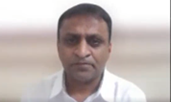
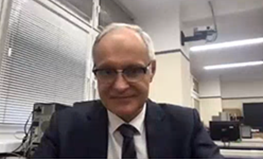
Ayay Patel from India, had some questions to the Vice Rector Marek Pawełczyk. They concerned promotion of the Silesian University and a potential student exchange program, short term certification programs and special technical courses; he also asked about possibilities of the Indian industry collaborating with the Silesian University of Technology; he also mentioned the Electric Vehicle and the Solar, Hydrogen car charging and cell manufacturing future of India and whether there are online or offline programs for these industries. The Vice Rector Marek Pawełczyk mentioned that India is one of the countries with which the Silesian University of Technology has a strong collaboration, he mentioned his visits to a few universities with which we have scientific agreements and visiting PhD students from India in no small part thanks to the attractive PhD studies program the Silesian University of Technology provides. He also gave some information on the scholarships for students from abroad. He mentioned that the university hosted a delegation from India, from West Bengal at the European Congress of Medium and Small Enterprises. As for further cooperation he mentioned that he would keep in touch along with Prof. Paweł Sowa and said that a collaboration model developed with Chinese universities could be considered.
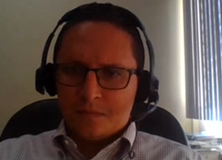
Alejandro José Dubón Balladares from Nicaragua, working for the National University of Engineering, joined the meeting as a reappearing member of the Board. He mentioned two projects they are working on, concerning a cooperation between his university (at the Faculty of Industrial Engineering) and the industry: Operation Excellence and Pro-Kaizen Project. He gave some details on the Pro-Kaizen Project first, which is a large project involving industrial services, forging companies, recycling companies, food companies along with bars and restaurants; he also mentioned the project path with applications and trainings, which goes on through the creation of official documents (handbooks, procedures, guides and technical sheets) in the various improvement areas and then proceeds with the implementation of a continuous improvement team. Then he mentioned some details on the Operation Excellence project, which started through a cooperation of his faculty with 10 companies. The project aims at an exchange of experiences between the companies with different items, a look for the way of Industry 4.0 and the establishment of a process of business correlation.
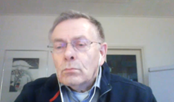
Theo Hendriks from the Netherlands, CEO and Founder of HyMove, a company involved in fuel-cell technology mentioned that they are currently a part of a larger ecosystem of several companies in renewable energy transition. He has presented examples of two cooperation instances concerning renewable energy and hydrogen. The first is called Connectr, which is a public-private partnership, where apart from the authorities and several companies in energy innovation, also universities are included. It is an open cooperation, hence available for parties interested in joining the project, including international companies and universities. The goal of Connectr is to create a powerful energy ecosystem in which innovation can flourish; the core organization of Connectr works on three blocks: an innovation lab, shared facilities and an innovation program. The ultimate goal is to accelerate technical innovations and with that, increase the speed of the energy transition. It has three focus themes: power systems engineering, electrochemical energy storage and sustainable drive systems. Key focus markets include inland shipping and cruises, heavy duty logistics, industrial and business parks and construction sites. He mentioned the shared facilities of the project, which aim at the support of the innovation process, including the Energy Demo Field (a test and demonstration facility for energy storage technology) and H2LAB (educational facilities for vocational and higher education training and projects). The second major project he mentioned is called SPRONG decentralized hydrogen. The mission and vision of the project is to grow within 4 years into a leading knowledge institute that is nationally recognized and seen in the field of decentralized energy and hydrogen applications. It involves several universities and is focused on the complete supply line of hydrogen from production to utilization. He mentioned the many companies involved in the project, all with various obligations, e.g., sharing practical knowledge, theoretical knowledge development, the transition from theoretical to practical knowledge and facilitating knowledge development.
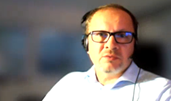
Tomasz Grabiec from Germany spoke next. He is working at the German subsidiary of the Iljin company (South Korea), which manufactures products for the automotive industry, especially wheel bearings. He himself deals with the product innovation of wheel bearings and brakes. He mentioned that at his company they do not have many possibilities to work with universities, mostly because this is handled by the headquarters in Seoul, while the European branch in Germany mainly works with customers. However, he mentioned his experience when it comes to cooperation between universities and the industry that he obtained while working at the Ford Motor Company, where he took part in a European funded project, specifically subject to the Horizon2020 program. The project was called “a LOW environment impact BRAke SYStem”, hence its abbreviation: LOWBRASYS. The project aimed at demonstrating a novel and low environment impact brake system that would reduce micro and nanoparticle emissions by at least 50%. The companies that were involved in this project came from various countries in Europe: the coordinator, being BREMBO SPA, an Italian company, and others, e.g., from Germany, Belgium, Hungary, Czechia and Sweden. He also shared some technical details on the project realization.

Ralf Weiser, from the USA, Director of Operations at DVIRC (Dellaware Valley Industrial Resource Center) in Southeast Pennsylvania gave some information on his company and his role in it. DVIRC deals with market research , lean manufacturing training, Six Sigma training, strategic planning and executive networking. Through his experience and work with several universities, he mentioned the top reasons for working with universities, including work with top tier talents on capstone projects, access to new technologies and new ways of thinking, work with talented students who may become part of their workforce and the opportunity to influence adaptation of their tech and services.
The meeting ended with a few closing remarks made by the Vice Rector Prof. Marek Pawełczyk on further cooperation. Prof. Paweł Sowa also mentioned that the topic of the next meeting will be determined through a consultation between the chairman of the next meeting and the Rector. In the near future the chairman of the next meeting will be appointed by the Rector of the Silesian University of Technology.
